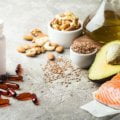Driven using consumer calls for straightforward, obvious, and sustainable products from organizations that embrace social activism, organic meals and non-food products shattered statistics. They moved into mainstream markets in 2018, ringing up more than $50 billion in U.S. Income. The U.S. Organic Marketplace 2018 broke the $50 billion mark for the first time, with income hitting a document $52.5 billion, up 6.3 percent from 2017, in line with the Organic Trade Association’s (OTA’s) 2019 Organic Industry Survey released May 17. New records were made in both the natural grocery store and the organic non-grocery store.
Organic food sales soared to $47.9 billion, increasing 5.9 percent, while sales of organic non-meal products jumped from 10.6 percent to $4.6 billion. The growth charge for organic persisted in easily outpacing the overall marketplace. In 2018, total meal sales within the U.S. Edged up just 2.3 percent, even as total non-meals income rose 3.7 percent.
According to the survey, Millennials push for transparency and integrity inside the meal supply chain and are savvy to deceptive marketing. The USDA Organic seal is gaining new enchantment as purchasers comprehend that natural is a certification. This is monitored and supported using legitimate requirements and is the best seal that encompasses the spectrum of non-GMO, no poisonous pesticides or chemical substances, dyes, or preservatives.
Market picture
Organic is no longer a spot marketplace. Almost 6 percent of the food offered inside the U.S. is organic, and organic merchandise—food and non-meals—may be found in every grocery shop aisle. Organic merchandise is also gaining shelf space in massive box shops, membership warehouse shops, and convenience stores and is increasingly bought on the Internet.
“Organic is now considered mainstream. But the attitudes surrounding organic are whatever the status quo,” said Laura Batcha, CEO and government director of OTA. In 2018, there was an awesome shift within the attitude of those running in natural towards collaboration and activism to transport the needle on the function organic can play in sustainability and tackling environmental initiatives.”
Produce continues to resonate with purchasers.
Organic fruits and greens retained their longstanding spot as the biggest of all principal organic categories, with sales of $17.4 billion in 2018, a five.6 percent rate of increase, on par with the boom, attained in 2017. The general result and greens class, along with each natural and conventional product, grew by 1.7 percent in 2018.
Fruits and greens now account for 36.3 percent of all organic meal income. Organic fruits and vegetables make up 14.6 percent of all products sold within the U.S. and have nearly doubled their marketplace percentage in the final ten years. This is fundamental because produced is a gateway to natural clients, specifically Millennials and people with younger families.
Industry professionals note that the more humans learn about fitness and well-being, the more people purchase sparkling produce. Best dealers in natural produce encompass carrots, greens, apples, bananas, berries, avocados, Brussels sprouts, cauliflower, and tropical culmination like mangoes and papayas. Outside the sparkling produce segment, the frozen, canned, and dried vegetable and fruit sections also made profits.
Innovation riding the natural dairy market.
Growth in the U.S. dairy sector slowed for the second year due largely to shifting weight loss program traits; nevertheless, it is the second-biggest organic category. Dairy and egg sales were $6.5 billion in 2018, up 0.8 percent from 2017, with natural egg income hitting $858 million, up 9.3 percent from 2017.
Consumers are also buying merchandise higher in healthy fats and protein, and many Millennials have moved away from cattle-based products and toward plant-based foods and beverages. To fulfill the modern client, the significance of innovation within the natural dairy zone has never been greater. In 2018, the enterprise responded with milk drinks with multiplied protein, extra full-fat dairy merchandise, new flavors, and grass-fed merchandise.
Organic reach a long way fast food
Consumers seek natural non-food products such as household goods, puppy foods, skincare, and supplements. What’s more, Millennials are better aware of delivery and sustainability. Sales of organic non-food products multiplied 10.6 percent to hit $4.6 billion in 2018, well above the 7.4 percent boom price suggested in 2017 and the 3.6 percent growth price stated in 2018 for the general non-meals industry (traditional and organic combined). The most powerful growth came from fiber, the largest non-food class, which bills 40 percent of the organic non-grocery stores. In 2018, fiber recorded $1.8 billion in sales, up from $1.6 billion in 2017.












